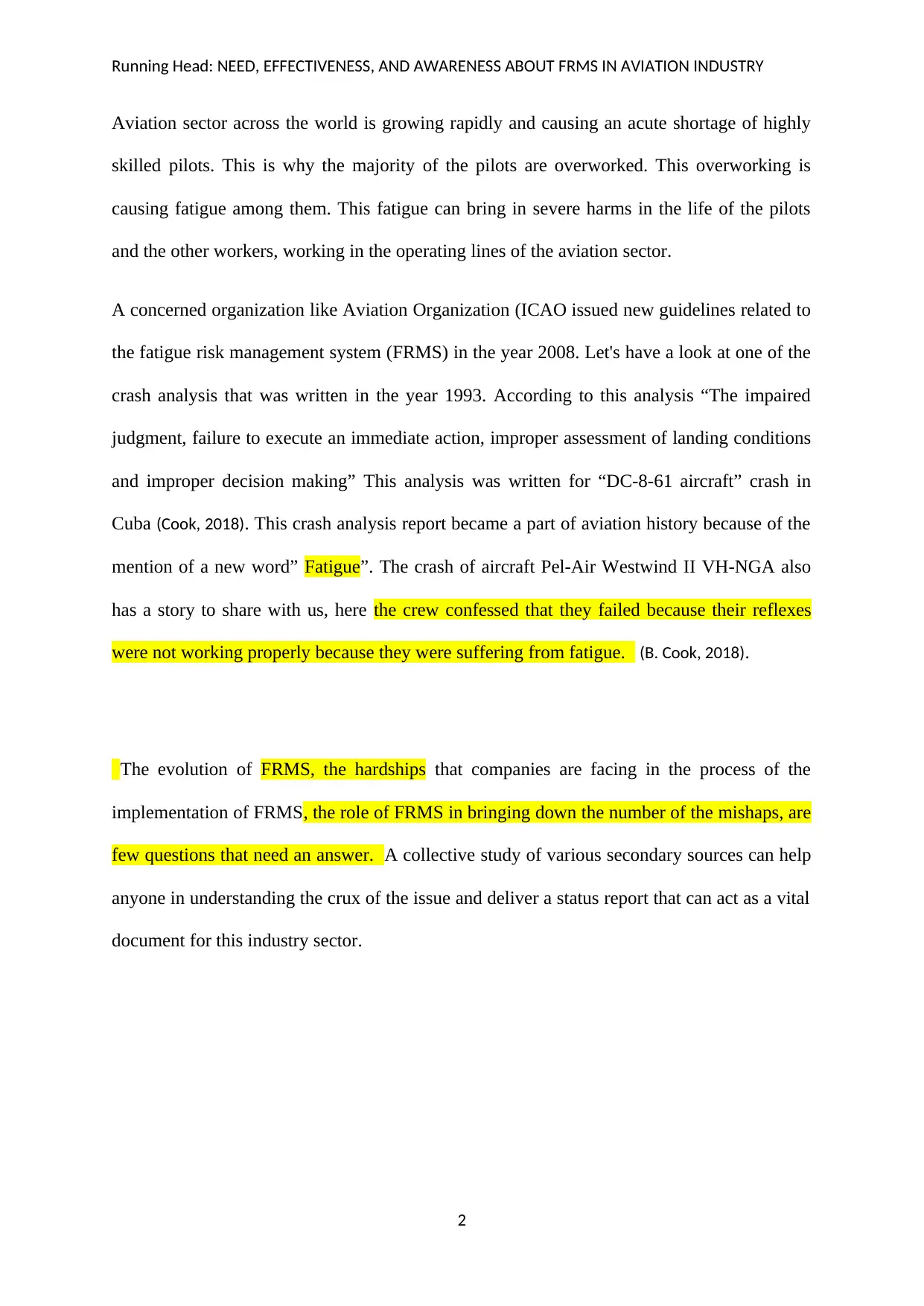Aviation Safety: FRMS Implementation, Effectiveness, and Awareness
VerifiedAdded on 2023/04/23
|3
|381
|80
Report
AI Summary
This report provides an in-depth analysis of the Fatigue Risk Management System (FRMS) within the aviation industry. It emphasizes the critical need for FRMS due to pilot fatigue, which poses a significant safety risk. The report references aviation accidents and studies to highlight the impact of fatigue on pilots and the importance of alertness. It details the evolution of FRMS, challenges in its implementation, and its role in reducing aviation mishaps. The report also explores the historical context of fatigue research, including early studies on sleep deprivation. The goal is to provide a comprehensive understanding of FRMS, making it a vital resource for industry professionals and students alike. The report also examines the implementation of FRMS, including the importance of managing flight and duty hours and ensuring adequate breaks for crew members.
1 out of 3










![[object Object]](/_next/static/media/star-bottom.7253800d.svg)